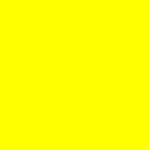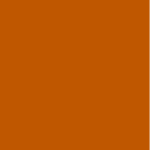Unauthorized Subject and Faculty Colors
From the moment the Intercollegiate Code of Academic Costume was written in 1895, colleges, universities, and academic costume manufacturers have used Faculty colors not authorized by the Intercollegiate Bureau of Academic Costume to represent degrees not on the Bureau’s official list. In most cases these colors were forwarded to the Bureau for approval; sometimes the Bureau added them to the official list of Faculty colors, sometimes they did not.
Proposals for new Faculty colors sharply increased in the 1950s, sparking an unfortunate revision of the American Council on Education’s Academic Costume Code in 1960. This revision made the color of the velvet edging of the academic hood and the velvet facings and sleeve bars of the doctoral gown signify the major subject of one’s degree, not the nomenclature of one’s degree as it appears on one’s diploma. But since the American Council on Education refused to authorize new “subject colors” after 1961, many academic subjects were left without a representative color.
This situation has led to an epidemic of unauthorized subject colors in the decades since the 1960 Academic Costume Code was written. These are colors created by colleges and universities needing a subject color for an academic program they offer that is not included in the Academic Costume Code, or they are colors created for professional, vocational, or technical degrees seeking pedagogical legitimacy within academia, or they are colors created by academic costume manufacturers for customers who want to wear academic costume signifying a unique academic subject, major, profession, vocation, or specialty – whether or not it is already subsumed by an existing authorized Faculty or subject color.
The chart below includes a few of the many unauthorized subject or Faculty colors that are being used today by various colleges, universities, and academic costume manufacturers. The squares of colors are representative; in most cases they have not been matched to actual fabric samples. But they do reflect the modern tendency to use brighter and more saturated colors for the velvet trim on academic costume.
Agriculture
Architecture
Commerce, Accountancy, Business
Commerce, Accountancy, Business
Chiropractic
Dance
Design







golden brown
blue-violet
sapphire blue
medium gray
silver
sage green
yellow
Foreign Affairs
Health Administration
Human Environmental Sciences
Human Resources
Hygiene, Health, and Rehabilitation Sciences
Industrial Arts






aquamarine
Kelly green
maroon
dusk
sage green
burnt orange
Justice Management
Nutrition
Occupational Therapy
Occupational Therapy
Optometry
Osteopathy
Parks, Recreation, Tourism







blue-violet
maroon
ink
Rhodes blue
orchid
Kelly green
rose
Physician Assistant
Psychology
Social Science
Statistics
Technology
Textiles






jade green
gold
citron
light rose
red
rose
The use of these unauthorized subject or Faculty colors is regrettable, leading to confusion and disorder in American academic costume. Many of the colors on this chart duplicate existing authorized colors or other unauthorized colors, or are so similar in hue to official subject or Faculty colors that it is difficult to distinguish between them. Further, some of the academic subjects on this chart have already been assigned an official color; in these cases the official color should be used, not a new color of personal preference. And finally, some academic subjects on this chart are already subsumed by an official color; it is not wise to create a new color for a subdivision of an existing discipline because this leads to excessive multiplication of subject colors and greater difficulty remembering and distinguishing between the color shades being used – exacerbating a serious problem that already exists in the official Faculty color list of the Intercollegiate Code of Academic Costume and the subject color list of the Academic Costume Code.